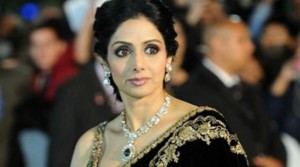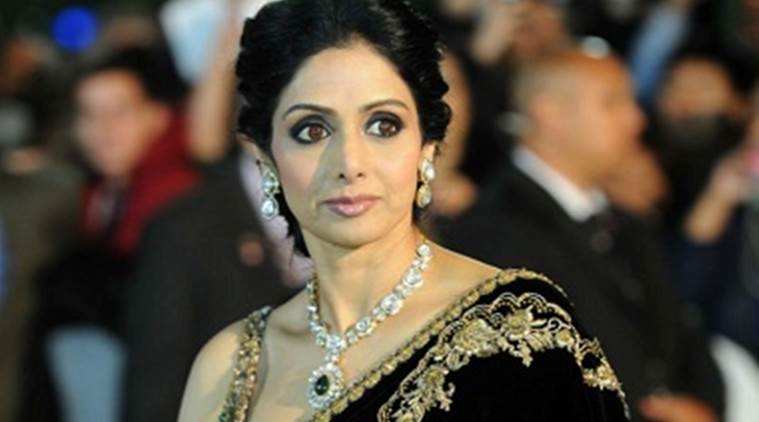 Debuting as a four-year-old Shree Amma Yanger as a child artist in Tamil film Thunaivan, Sridevi went on to become India’s first female superstar. Sridevi was a rare phenomenon. It wasn’t just charisma, she was possessed of a singular acting ability.
Debuting as a four-year-old Shree Amma Yanger as a child artist in Tamil film Thunaivan, Sridevi went on to become India’s first female superstar. Sridevi was a rare phenomenon. It wasn’t just charisma, she was possessed of a singular acting ability.
Sridevi passed away after a massive cardiac arrest in Dubai on Saturday night February 24, and will be remembered for some of the iconic films she has done in the Hindi, Tamil, Telugu, and Malayalam film industries.
The actor, who made her Bollywood debut as a child artist in Julie (1975), eventually picked up bigger projects, which further established her as an irreplaceable artist and a diva.
She was a constant and comforting screen presence in the 1970s and beyond—someone who could be depended upon on to give her best.
She started out in Tamil cinema, branched out into the southern languages and then moved to Bollywood, where she would meet her future husband on the sets of Mr India.
In ‘Babu’ (1971), one of his darker movies from the black-and-white era, Sivaji Ganesan spots a street urchin begging on the street.
He’s stricken with emotion and can’t hold back his tears. He’s stricken with emotion and can’t hold back his tears.
Acting opposite the veteran actor, in the role of the beggar, was a little girl with matted hair, grime-darkened face and a pair of twinkling eyes shadowed by trouble.
“Why are you begging?” he asks, aghast.
“Hunger,” replies the 6-year-old Sridevi, eyes welling up and wearing in an expression that reflected her total commitment to the role—that remained the hallmark of her movie career.
Nearly half a century later, tributes and condolences poured in from around the world for the actor, who died at the age of 54 after reportedly suffering cardiac arrest in Dubai.
Even as a child actor, Sridevi, born in Meenampatti near Sivakasi in Tamil Nadu, showed abundant talent. People fawned over her cuteness and were amazed by her precocious performances in equal measure.
When she acted in ’16 Vayathinile’ (1977), she was just 14 but it marked her arrival as a heroine, playing a vulnerable teen who falls for the suave doctor visiting town. Rajinikanth and Kamal Haasan also acted in the Bharathi Raja movie, displaying exceptional talent, but Sridevi as Mayilu was the standout.
Through the decades, Sridevi’s performances moved and thrilled audiences. In a seminal scene from ‘Johnny’ (1980), Sridevi weeps after a raggedly handsome Rajinikanth turns her down. Her reaction moves Rajinikanth to reciprocate in a scene made magical by Ilayaraja’s evocative background score.
In all her films, including career defining ones in the south and in Bollywood, Sridevi worked with directors and writers who were changing the cinematic landscape with their craft. “Earlier, there was only one type of films: like the movies of Bhim Singh, which invariably fell under comedy or drama,” said film critic and author Baradwaj Rangan.
“In the 70s, Bharathi Raja, Mahendran and Balu Mahendra came with a wider variety of movies.” Her 1986 Bollywood hit ‘Nagina’ was the story of the typical avenging female. She carried the movie, unusual in a notoriously male-hero dominated industry. The buzz was “maybe Sridevi is enough for a movie, may be a hero is not needed,” Rangan said. ‘Chandni’ (1989), ‘Chaalbaaz ‘(1989) and ‘Lamhe’ (1991) put the seal on her reputation as a superstar of Indian cinema.
She became known as a ‘Yash Chopra heroine’ and was also credited with helping to re-establish him after a fallow period.
In between came one of India’s best-loved movies ‘Mr India’ (1987), in which she starred opposite Anil Kapoor. It was produced by the actor’s brother Boney Kapoor, who would go on to marry Sridevi.
During her stint in Tamil cinema, she acted several times opposite Kamal Haasan. K Hariharan, an Ashoka University professor who has written an autobiography of Haasan, remembers the actor telling him: “Most of the films we worked in were of the ‘disturbing’ type, requiring a certain maturity on the audiences’ part,” he said, possibly referring to
movies such as ‘Sigappu Rojakkal’ (1978) and ‘Moondram Pirai’ (1982). “And I found a perfect co-actor in her, balancing my characters’ anxieties, anger and sexuality. She could portray the right amount of vulnerability mixed with desires of a new women’s generation and a personal charisma added to it.”
Returning to the screen after many years, Sridevi moved audiences again with her sincere portrayal of a timid, homebound mother empowering herself in ‘English Vinglish’ (2012). Her last outing was that of a mother avenging her step-daughter in last year’s movie ‘Mom’. Sridevi acted in more than 300 movies across languages and was the mother of two daughters, one of whom is set to make her debut. She has a tremendous legacy to call upon.
Awarded the Padma Shri in 2013, Sridevi was known to be reserved and generally kept to herself. Reminiscing about a meeting with her, actor Juhi Chawla says, “We lived in the same building. Once in a while when I would go for a walk, I would see her jogging, with earphones plugged in. I would often see her taking evening walks when there would be fewer people around. She would often say hello. She was very shy and would prefer to be on her own. I met her on several occasions and she has always been very sweet and soft-spoken in real life as well. She kept more to herself. She was just fabulous and magical on screen and I will always be her fan.”
Married to producer Boney Kapoor in 1996, Sridevi took an eight-year sabbatical from Hindi movies before returning with English Vinglish in 2012, a comeback that was received warmly by the audience.
Sridevi’s last film in the Southern film industry was a Tamil fantasy film, Puli (2015), which won her many accolades. The actor was to be seen next in a cameo in Zero, directed by filmmaker Anand L Rai.







